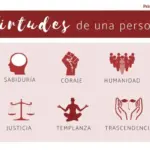Do you know synesthesia? Do you think you are a synesthetic person? Know all the characteristics of this skill and how you can learn it thanks to certain psychological tricks.

Surely the word synesthesia It sounds familiar to you and perhaps you have heard it associated with the rhetorical figure used when interpreting poems. This definition of synesthesia refers to the literary term that is associated with this quality. In this way, the meaning of synesthesia refers to when we talk about “bright yellow” since we do not hear any scream when we see that color, but nevertheless we attribute that name to it when the hue is very intense.
By using this conjugation of words we are mixing senses, that is, we attribute a sensation to a sense that does not correspond to it (yellow does not sound but we associate it with the sense of hearing). However, not all of us are lucky enough to see colors in music or taste words. In the same way, when we refer to a synesthetic person, its meaning refers to the quality that certain humans have.
What is synesthesia? Definition
The synesthesia It is a biological process, specifically a neurological process, that happens to few people, around 2% of the population, through which sensations and senses mix. This happens because the areas that are responsible for color, numbers and auditory centers are very close to each other, causing a transversal activation of these areas, that is, a connection is produced between adjacent areas after the presentation of a stimulus.
Thus, people with synesthesia or a synesthetic capacity They may attribute seeing colors when they listen to music, feeling some emotion when touching an object (not because that object triggers memories or conditioning has occurred, but every time they touch some type of material, that material evokes a specific emotion), or savoring words.
What does it mean to be a synesthetic person?
Being a synesthetic person It implies great sensitivity, since the senses are perceived jointly and with stimuli that generally do not trigger the activation of said sense.
According to different studies, it has been shown that many people with autism are synesthetes, as well as people suffering from epilepsy. In these cases, people develop this ability to be able to make metaphors of what they are experiencing, probably due to a deterioration or imprecision in the language, and thus achieve better, broader communication.
Many times the synesthesia It is related to artists and people who have great creativity. Having synesthesia, therefore, provides a predisposition to develop at a poetic, musical or literary level.
Although it is a great virtue, people with synesthesia feel somewhat rejected by society. They are often called strange for explaining that numbers have colors or that emotions have flavor. Sometimes they hide their synesthetic quality for this reason, but in reality it can be a great virtue, since for example, by associating a color with numbers and letters, they can perform mathematical calculations with great fluency or they can better distinguish words with a simple glance. , which facilitates the memorization process.
How do you know if you are synesthete? Synesthesia test
The synesthetic people They cannot control synesthesia. For example, if you listen to a new piece of music, you can see a color or taste a flavor without any effort. Mainly, to detect if you are a synesthete, we recommend that you look at the following:
- Stays the same over time: The people with synesthesia They usually have the same types of sensations despite the passage of time. That is, if, for example, you see the letter ‘A’ in green, you will also see it in the same tone in ten years.
- It usually begins in childhood: Although the synesthesia It usually develops over time, the reality is that this ability is usually detected during childhood.
- Description ability: Although it is difficult to put examples of synesthesia people can describe what happens in their minds.
- Perceptions are involuntary: The synesthesia of colors, smells, music or any of those that exist are involuntary, that is, people do not think for it to happen, it just happens.
- Sensory crossings are predictable: The synesthesia It usually happens in a predictable way. That is, it is possible that you see blue when you hear a specific letter and that it is always that way.
What is the cause of synesthesia?
Although it is not yet known which genes are related to synesthesia and with a synesthetic quality, it is known that there is a certain hereditary component, since 40% of people with this quality have a direct relative who also presents it, even if it is not the same type.
Furthermore, synesthesia occurs involuntarily and automatically but can be provoked by ingesting certain toxic substances. Therefore, it can be said that all human beings have this capacity, but we do not always have it activated. There are theories that suggest that when we are born we are all synesthetes but we lose it as our brain matures.
Is synesthesia a disease?
Synesthesia, although many people may refer to it as one of the diseases of the senses, it is neither an alteration nor a disorder. On the contrary, synesthetic people can benefit from many advantages due to this quality.

Synesthesia test: Main characteristics of synesthetic people
An effective way to know if you have one of the types of synesthesia is to look at the most common symptoms of this condition. Despite this, you should know that there are many different examples of synesthesia and that is why it is sometimes difficult to determine if it is a synesthetic virtue or not.
- Involuntary perceptions of synesthesia: The people with synesthesia They make these connections involuntarily. Therefore, these intersections of senses (such as tasting shapes or hearing colors, among others) are created at certain specific moments without your will.
- It always occurs on the same occasions: The synesthesia perceived by someone who is synesthetic always occurs on the same occasions. That is, the synesthetic sensation occurs in a specific situation and in the same way.
- They are able to describe it: People with synesthesia are able to perfectly describe how their senses are related. Therefore others can understand what you see with your synesthesis
- They are creative: A person with synesthesia He develops this capacity thanks to his great creativity. Therefore, all of them really enjoy artistic activities such as painting and music.
- It happens internally: Both colored letters, colored numbers or any of the faculties of the synesthesia are perceived internally. That is, the perception is generated in the mind and is not transferred outside of your body.
- Remains over time: The best synesthesia test It is to verify that this faculty or our perceptions remain the same despite time. So much so that it always happens with the same conditions even if many years pass.
- You have it since childhood: In most cases the synesthesias They start from a very young age. Therefore, in most cases people experience their synesthetic sense from childhood.
These are the indications that show if you really are a synesthetic person Now that you have taken this synesthesia test, you can now analyze what your type of synesthesia is to get the most out of this ability.
Types of synesthesia
In reality there can be many combinations, since different stimuli can be combined with the five senses that we have. However, to make this distinction simpler, psychologists have considered that there are three types of synesthesia:
- Intramodal synesthesia: In these cases we observe that synesthesia It appears in the same sensory modality, such as: grapheme-color, that is, a word or number with a color. This is one of the most common types of synesthesia.
- Intermodal synesthesia: In these types of synesthesia, the synesthetic perception It is produced through different sensory modalities, for example, a sound evokes a color, a word evokes a flavor, or an object evokes an emotion.
- Conceptual synesthesia: It is produced through concepts or ideas, that is, feeling that numbers, for example, have a specific special location, tens in one position, hundreds in another, etc.

Examples of synesthesia: The most common cases
In order to better understand synesthesia We can show different examples of synesthesia. In this way, although many of us understand the meaning of synesthesia through examples, we will be able to visualize what this quality is like.
- Notice the intertwined senses s. This is one of the most understandable examples of synesthesia. So much so that people notice that their senses literally intertwine giving them a different view of the world. This way, you can bite into a food and feel its geometric shape.
- feel a emotion differently A good example of synesthesia are those people who, when thinking about their loved one, can close their eyes and see certain colors that represent them.
- Another example with which a synesthete identifies is reading these same sentences with the voice of a person with their own identity. That is, as if you were talking to her in the middle of the street.
Can synesthesia be learned?
According to psychology and philosophy professor Berit Brogaard, synesthesia if it can be learned. So much so that according to this psychologist this can be practiced by trying to associate two different categories of senses into one. That is, for example, every time you hear a sound you must relate it to a color. Once you start associating these two senses, your brain will end up relating them on its own.
In this way if you want to be a synesthetic person You are in luck, with a little effort and above all knowing yourself well, you will be able to develop this great skill. Therefore, it is vital that if you believe that you do not have intrapersonal skills, consult with a psychologist so that he or she can help you.
Surely if you are a person with synesthesia and you are reading this article, you already feel very identified with what is said, and therefore, there you have the answer to your question. If when you listen to music you see colors that move as the notes sound, if you are able to detect a certain shape in a random combination of numbers or letters, if you notice flavor in the words, etc., you are a synesthetic person. Enjoy this great quality!








